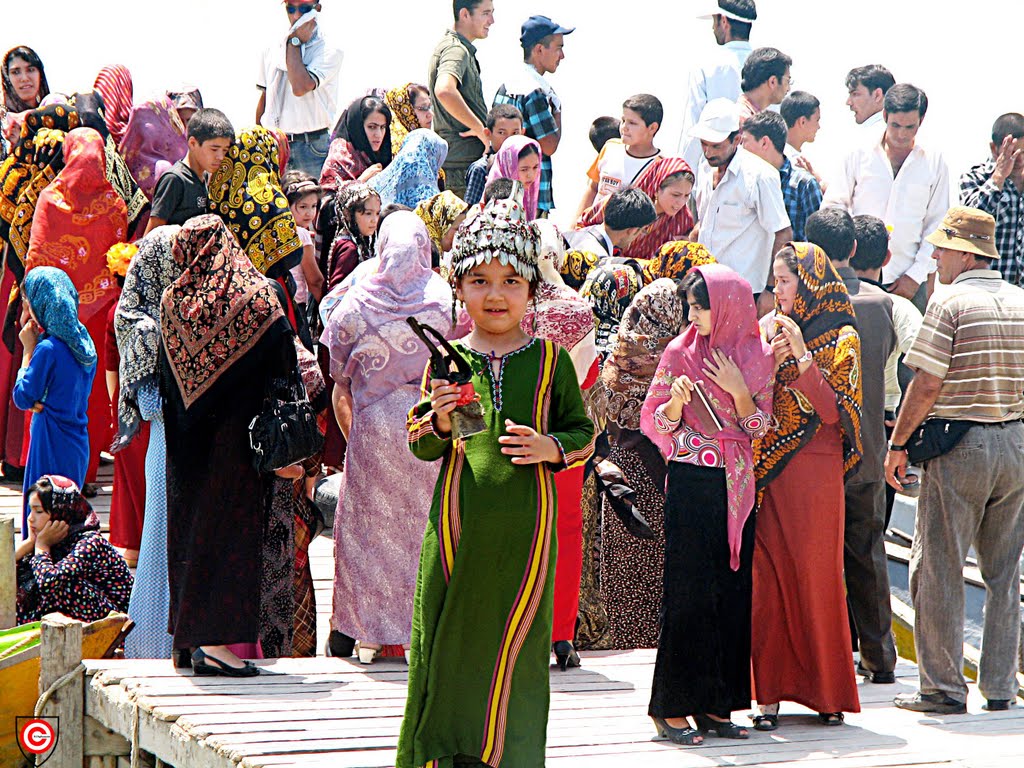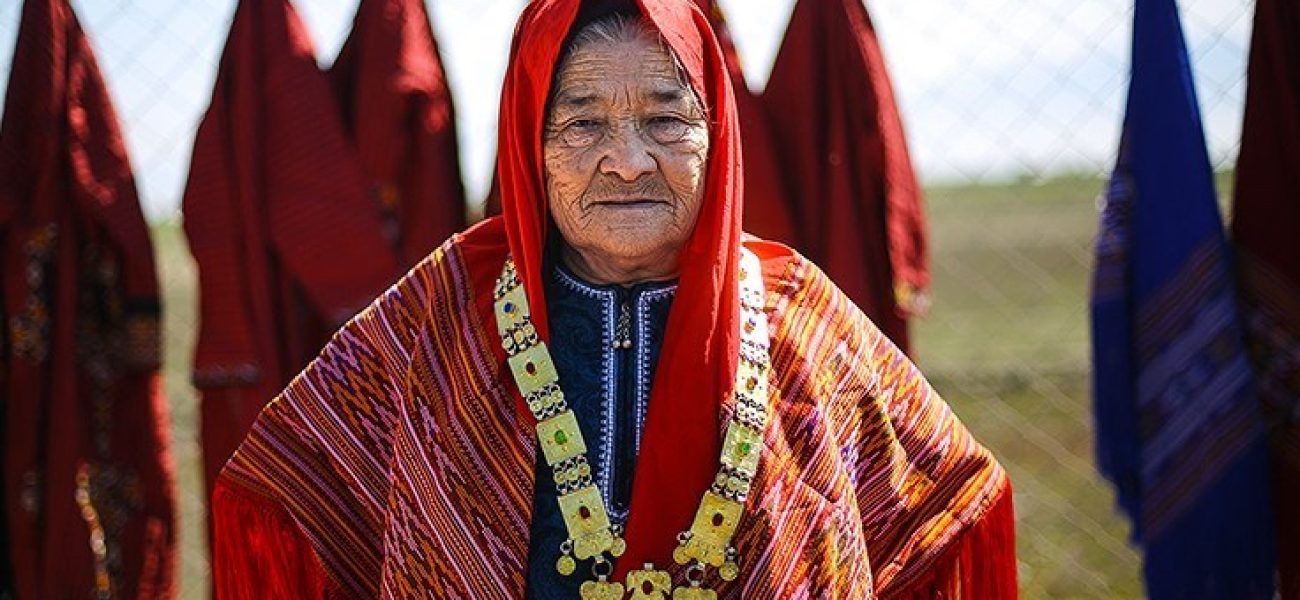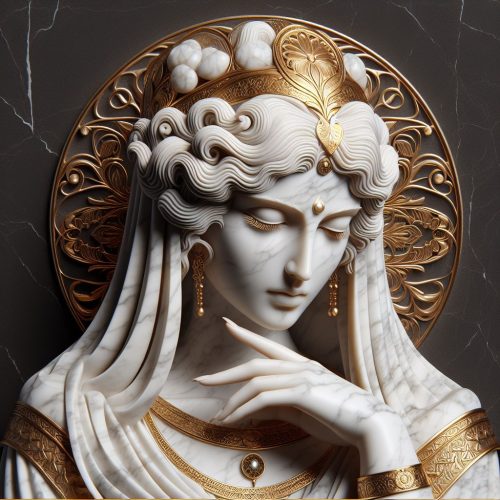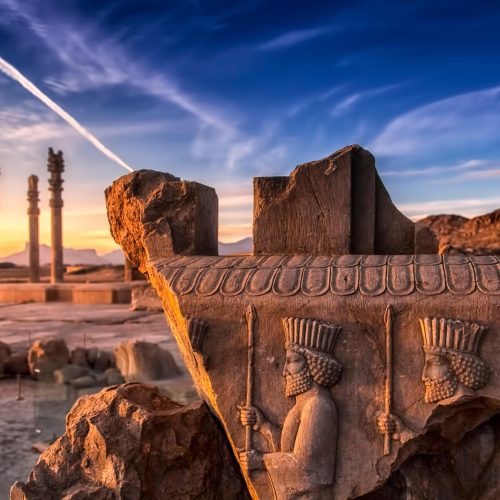Iranian Turkmens, a branch of the larger Turkmen ethnic group, inhabit the northern and northeastern regions of Iran, where they have preserved their distinct cultural heritage and language amid the diverse tapestry of Iranian society. This scholarly article aims to explore the ethnography, ethnic history, modern Turkmen tribes in present-day Iran, language, and notable Iranian Turkmens, shedding light on their unique identity within the broader Iranian context.
Ethnography
The Iranian Turkmens, also known as Turkmen Sahra or Turkmens of Iran, have a rich and distinctive ethnographic heritage that reflects their nomadic past and their adaptation to settled agricultural or urban lifestyles in more recent times.
Traditional Lifestyle
Traditionally, Iranian Turkmens were pastoral nomads, moving seasonally with their herds of sheep, goats, and camels in search of grazing lands and water sources. This nomadic lifestyle shaped every aspect of their existence, from their housing to their economy and social organization. The traditional Turkmens’ round tents, known as “yurts” or “kara goz,” were portable structures made from felt and woven textiles, designed to withstand the harsh climatic conditions of the region while providing a cozy and functional living space for nomadic families.
Social Organization
Family and clan networks are central to Turkmen social organization, with kinship ties playing a crucial role in determining social status, marriage alliances, and resource distribution within the community. Turkmen society is organized along patriarchal lines, with the eldest male member of the family typically serving as the head of the household and making key decisions regarding family matters, finances, and social affairs. Extended families often live together in close-knit communities known as “qishlaqs,” where they share resources, labor, and support each other in times of need.
Cultural Practices
Iranian Turkmens have a rich and diverse cultural heritage, which is reflected in their language, music, dance, cuisine, and rituals. Traditional Turkmen music, characterized by the haunting melodies of stringed instruments such as the “dutar” and “gyjak,” plays an integral role in social gatherings and celebrations, providing a soundtrack to life’s joys and sorrows. Turkmen dance, with its intricate footwork and graceful movements, is a form of expression that transcends language and connects people across generations.
Cuisine is another important aspect of Turkmen culture, with dishes such as “plov” (rice pilaf with meat and vegetables), “shashlik” (grilled meat skewers), and “manty” (dumplings filled with meat and onions) being staples of the Turkmen diet. These dishes reflect the nomadic heritage of the Turkmen people, with an emphasis on hearty, filling meals that provide sustenance for long days of travel and labor.
Rituals and ceremonies also play a significant role in Turkmen culture, marking important milestones in the lives of individuals and communities. Births, weddings, and funerals are all occasions for elaborate rituals and celebrations, which often involve music, dance, feasting, and religious observances. Traditional Turkmen weddings, in particular, are grand affairs that can last for several days, with elaborate customs and traditions that reflect the rich cultural heritage of the Turkmen people.
The ethnography of Iranian Turkmens offers a fascinating glimpse into the rich cultural tapestry of a resilient and vibrant ethnic community. Despite the challenges posed by modernization and urbanization, Iranian Turkmens continue to preserve their distinct way of life, drawing strength and inspiration from their nomadic past while embracing the opportunities and complexities of the modern world. By studying their traditional lifestyle, social organization, and cultural practices, we gain a deeper understanding of the enduring resilience and adaptability of the Turkmen people in the face of change and transformation.
Ethnic History

The ethnic history of Iranian Turkmens is complex and multifaceted, reflecting centuries of migration, settlement, and interaction with various ethnic groups in the region. The roots of the Turkmen people can be traced back to the ancient Turkic tribes of Central Asia, who inhabited the vast steppes and grasslands of present-day Turkmenistan, Uzbekistan, and Kazakhstan.
Origins and Migration
The Turkmen people are believed to be descendants of the Oghuz Turks, a confederation of Turkic tribes that emerged in Central Asia during the medieval period. In the 11th century, the Oghuz Turks began migrating westward into the Iranian plateau, where they gradually settled in the northern and northeastern regions of present-day Iran. This migration was driven by a variety of factors, including political instability, economic opportunities, and environmental pressures.
As they migrated into Iran, the Turkmen tribes established themselves as pastoral nomads, practicing transhumance and moving seasonally with their herds of livestock in search of grazing lands and water sources. This nomadic lifestyle allowed the Turkmen people to adapt to the harsh environmental conditions of the region and establish a sustainable way of life based on animal husbandry and subsistence agriculture.
Interactions with Other Ethnic Groups
Over the centuries, Iranian Turkmens interacted with various ethnic groups in the region, including Persians, Kurds, Arabs, and Balochs, among others. These interactions were often shaped by factors such as trade, warfare, and cultural exchange, which contributed to the rich tapestry of ethnic diversity in Iran.
One of the most significant interactions in Turkmen history was with the Persian Safavid dynasty, which ruled Iran from the 16th to the 18th centuries. The Safavids sought to consolidate their power by promoting Twelver Shia Islam as the state religion and establishing Persian as the dominant language of administration and culture. Despite these efforts at assimilation, the Turkmen tribes retained their distinct ethnic identity and cultural traditions, resisting attempts to fully integrate into Persian society.
Cultural Adaptations and Resilience
Throughout their history in Iran, Iranian Turkmens have demonstrated remarkable resilience and adaptability in the face of changing political and social dynamics. They have preserved their distinct Turkmen language, customs, and social organization, while also incorporating elements of Persian, Kurdish, and other regional cultures into their way of life.
Despite challenges posed by modernization, urbanization, and government policies, Iranian Turkmens continue to maintain their ethnic identity and cultural heritage, passing down traditions and customs from generation to generation. Today, they are recognized as an integral part of Iran’s diverse ethnic mosaic, contributing to the country’s cultural richness and social fabric.
The ethnic history of Iranian Turkmens is a testament to their resilience, adaptability, and cultural distinctiveness in the face of centuries of migration, interaction, and assimilation. By tracing their origins, migration patterns, and interactions with other ethnic groups in the region, we gain insight into the complex dynamics of ethnic identity and cultural diversity in Iran. Despite the passage of time and the challenges of modernity, Iranian Turkmens remain proud custodians of their Turkmen heritage, preserving traditions and customs that have endured for centuries.
Modern Turkmen Tribes in Present-day Iran

The Turkmen population in present-day Iran is organized into various tribal confederations, each comprising multiple tribes and clans with distinct identities and customs. These tribes play a significant role in shaping the social, political, and cultural landscape of the regions where they reside, maintaining close-knit communities based on shared ancestry, language, and traditions.
Demographic Distribution
Iranian Turkmens primarily inhabit the northern and northeastern provinces of Iran, including Golestan, North Khorasan, and Razavi Khorasan. Within these provinces, Turkmen settlements are typically clustered in rural areas, where they engage in agriculture, animal husbandry, and other traditional occupations. While some Turkmen communities have transitioned to settled agricultural or urban lifestyles, many still maintain strong ties to their nomadic heritage and continue to practice semi-nomadic or transhumant livelihoods.
Social Organization
Turkmen society is organized along tribal lines, with each tribe comprising multiple extended families or clans that trace their lineage to a common ancestor. The tribal structure serves as the primary unit of social organization, providing a framework for kinship ties, resource sharing, and conflict resolution within the community. Tribal leaders, known as “aksakals” or “elderly men,” play a crucial role in mediating disputes, preserving cultural traditions, and representing the interests of their respective tribes.
Cultural Significance
Turkmen tribes in Iran maintain a rich and diverse cultural heritage, which is expressed through language, music, dance, cuisine, and rituals. The Turkmen language, a dialect of the Turkic language family, serves as a vital marker of identity and cultural heritage for Iranian Turkmens, providing a means of communication within their communities and preserving their distinct linguistic identity.
Traditional Turkmen music and dance are integral parts of social gatherings and celebrations, reflecting the nomadic heritage and pastoral lifestyle of the Turkmen people. Instruments such as the “dutar” (a long-necked lute) and “gyjak” (a bowed string instrument) are commonly used in musical performances, while dances such as the “lebend” and “halay” showcase the agility and grace of Turkmen dancers.
Cuisine is another important aspect of Turkmen culture, with dishes such as “ash” (a hearty soup), “goshnan” (a type of meat pie), and “chorba” (a meat and vegetable stew) being popular among Turkmen communities. These dishes reflect the nomadic heritage of the Turkmen people, with an emphasis on simple, hearty meals made from locally available ingredients.
Rituals and ceremonies also hold significant cultural significance for Turkmen tribes, marking important milestones in the lives of individuals and communities. Births, weddings, and funerals are all occasions for elaborate rituals and celebrations, which often involve music, dance, feasting, and religious observances. Traditional Turkmen weddings, in particular, are grand affairs that can last for several days, with elaborate customs and traditions that reflect the rich cultural heritage of the Turkmen people.
Modern Turkmen tribes in present-day Iran play a vital role in preserving and perpetuating the cultural traditions and heritage of the Turkmen people. Through their social organization, cultural practices, and sense of identity, Turkmen tribes contribute to the rich tapestry of ethnic diversity in Iran, representing a vibrant and resilient community that continues to thrive in the face of modernization and change.Top of Form
Language
The language spoken by Iranian Turkmens is Turkmen, which belongs to the Turkic language family. Turkmen is closely related to other Turkic languages spoken in Central Asia, such as Turkmenistan, Uzbekistan, and Kazakhstan, but it has also been influenced by Persian due to centuries of coexistence with Persian-speaking populations in Iran.
Historical Context
The Turkmen language has ancient roots, tracing back to the Oghuz Turkic tribes that migrated from Central Asia to the Iranian plateau in the medieval period. Over time, Turkmen underwent linguistic changes and absorbed vocabulary and grammatical structures from Persian, Arabic, and other languages spoken in the region. This linguistic convergence resulted in the development of distinct dialects of Turkmen, each with its own regional variations and nuances.
Script
Historically, Turkmen was written in the Arabic script, which was used for literary and administrative purposes until the early 20th century. However, with the modernization efforts of the Iranian government, Turkmen was officially written in the Latin script in Turkmenistan. In Iran, Turkmen is often written in the Perso-Arabic script, which reflects the historical influence of Persian language and culture in the region. Despite variations in script usage, the core vocabulary and grammar of Turkmen remain consistent across different dialects and writing systems.
Significance
Turkmen language plays a crucial role in preserving the cultural identity and heritage of Iranian Turkmens. It serves as a means of communication within Turkmen communities, facilitating social interactions, storytelling, and cultural transmission from one generation to the next. The use of Turkmen language reinforces a sense of shared identity and belonging among Iranian Turkmens, fostering solidarity and cohesion within the community.
Furthermore, Turkmen language serves as a repository of traditional knowledge, customs, and oral literature passed down through generations. Folk tales, proverbs, and epic poetry are often transmitted orally in Turkmen, preserving the collective memory and wisdom of the Turkmen people. Additionally, Turkmen language is used in traditional music, poetry, and performing arts, providing a cultural anchor that connects Iranian Turkmens to their ancestral roots and cultural heritage.
Challenges and Preservation Efforts
Despite the cultural significance of Turkmen language, it faces challenges in the modern era, particularly due to the dominance of Persian as the official language of education, government, and media in Iran. As a result, there is a risk of language shift and language loss among younger generations of Iranian Turkmens who may prioritize Persian fluency for socio-economic opportunities.
To address these challenges, efforts have been made to promote Turkmen language and culture through initiatives such as Turkmen language schools, cultural festivals, and publications in Turkmen. Additionally, advocacy groups and community organizations work to raise awareness about the importance of preserving Turkmen language and provide resources for Turkmen language education and literacy programs.
Turkmen language is a vital aspect of Iranian Turkmen identity, serving as a linguistic link to their ancestral heritage and cultural traditions. Despite challenges posed by language shift and modernization, efforts to promote Turkmen language and preserve its rich linguistic heritage continue to play a crucial role in safeguarding the cultural identity and heritage of Iranian Turkmens for future generations.
Notable Iranian Turkmens
Abdolhossein Teymourtash (1883-1933): Abdolhossein Teymourtash was a prominent statesman, diplomat, and reformer during the early 20th century in Iran. Born into a Turkmen family in Tehran, Teymourtash played a key role in modernizing Iran’s administrative and educational systems during the Pahlavi era. He served as Minister of Foreign Affairs and Minister of Court under Reza Shah Pahlavi, overseeing Iran’s foreign relations and internal affairs. Teymourtash was also a strong advocate for modernization and secularization, promoting initiatives such as the establishment of secular schools, the adoption of Western-style dress, and the modernization of Iran’s legal system.
Gholamreza Takhti (1930-1968): Gholamreza Takhti was an Olympic gold medalist wrestler and national hero known for his sportsmanship and philanthropy. Born into a Turkmen family in Tehran, Takhti rose to prominence as one of Iran’s most successful wrestlers, winning numerous national and international championships in freestyle wrestling. He represented Iran in the Olympics, winning a gold medal in the 1956 Melbourne Games and a silver medal in the 1952 Helsinki Games. Takhti was admired not only for his athletic prowess but also for his humility, generosity, and commitment to social causes. He was known as the “Iranian Hercules” and remains a beloved figure in Iranian sports history.
Mohammad-Hossein Shahriar (1906-1988): Mohammad-Hossein Shahriar was a renowned poet, writer, and literary figure whose works have left a lasting impact on Persian literature. Born into a Turkmen family in Tabriz, Shahriar was deeply influenced by his Turkmen heritage and the natural beauty of the Iranian countryside, which is reflected in his poetry. He is best known for his epic poem “Heydar Babaya Salam” (“Salute to Heydar Baba”), which celebrates the heroic resistance of Turkmen tribes against Russian imperialism in the late 19th century. Shahriar’s lyrical style, rich imagery, and profound themes of love, nature, and patriotism have earned him a prominent place in the pantheon of Persian poets.
Ata’ollah Mohajerani (1944-present): Ata’ollah Mohajerani is an Iranian scholar, writer, and former minister of culture and Islamic guidance. Born into a Turkmen family in Gorgan, Mohajerani has been a prominent advocate for cultural reform and freedom of expression in Iran. He served as Minister of Culture under President Mohammad Khatami, where he implemented policies aimed at promoting artistic freedom, cultural diversity, and dialogue between civilizations. Mohajerani is also a prolific author and intellectual, known for his insightful commentary on Iranian politics, culture, and society.
Sardar Azmoun (1995-present): Sardar Azmoun is a professional footballer and one of Iran’s most talented soccer players. Born in Gonbad-e Kavus, Azmoun began his career playing for local clubs before making his professional debut with the Iranian team Sepahan. He has since played for top clubs in Russia and Europe, including Rubin Kazan, Rostov, and Zenit Saint Petersburg. Azmoun is known for his goal-scoring ability, technical skill, and versatility on the field. He has represented Iran in international competitions, earning praise for his contributions to the national team and raising the profile of Iranian football on the global stage.
These notable Iranian Turkmens represent a diverse range of talents and accomplishments, highlighting the rich cultural, intellectual, and athletic contributions of the Turkmen community to Iranian society and beyond.
Iranian Turkmens represent a unique and vibrant ethnic community within the diverse tapestry of Iranian society, whose rich cultural heritage and traditions have endured for centuries. Despite challenges posed by modernization and government policies, Iranian Turkmens continue to preserve their distinct identity, language, and way of life, serving as custodians of a proud and resilient heritage that spans generations. By studying the ethnography, ethnic history, modern Turkmen tribes, language, and notable figures of Iranian Turkmens, we gain insight into the complex dynamics of ethnicity, identity, and cultural diversity in contemporary Iran.




